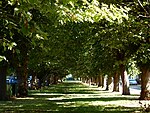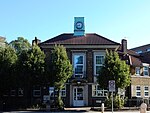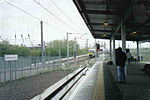West Drayton

West Drayton is a suburban town in the London Borough of Hillingdon. It was an ancient parish in the county of Middlesex and from 1929 was part of the Yiewsley and West Drayton Urban District, which became part of Greater London in 1965. The settlement is near the Colne Valley Regional Park and its centre lies 1.9 miles (3 km) north of Heathrow Airport. Traditionally the Parish of West Drayton covers 3.4 square kilometres (1.3 sq mi). In 1901 the population of the civil parish was 984. In the 2011 Census 14,370 people were living in the West Drayton electoral ward. The ward has three councillors in the Hillingdon Borough Council. The vast majority of the housing in West Drayton is mid-20th century.
Excerpt from the Wikipedia article West Drayton (License: CC BY-SA 3.0, Authors, Images).West Drayton
Porters Way, London West Drayton (London Borough of Hillingdon)
Geographical coordinates (GPS) Address Nearby Places Show on map
Geographical coordinates (GPS)
| Latitude | Longitude |
|---|---|
| N 51.5043 ° | E -0.4646 ° |
Address
Porters Way
Porters Way
UB7 9AT London, West Drayton (London Borough of Hillingdon)
England, United Kingdom
Open on Google Maps






